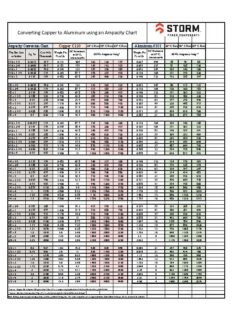ALUMINUM BUS BAR AND ELECTRICAL CONNECTORS
Aluminum Bus Bars
Aluminum bus bars are often used as electrical conductors in power distribution systems, where heat can easily be dissipated. Because of the low value of the metal, it can be the best economic option for the application.
If requested, the moment a question or quote request comes to Storm Power, our engineering design team employs a process designed to make sure that each customer makes the right choice in metal, design and fabrication. If you need to create custom aluminum or copper bus bar, we work side-by-side with your engineers with the shared goal of making your part work from inception to completion.
Here are the factors Storm Power employs in determining use of aluminum bus and electrical components:
Temperature Rise - Aluminum conducts at a lower level than copper. To compensate for heat dissipation, we will often recommend creating a larger surface area. This leads to better heat exchange for more efficient thermal dissipation.
Available Space - In tight enclosures - like cabinets, switchgear and panelboards - using a larger, thicker bus bar may seem an unlikely alternative, however, while dimensionally larger, the most commonly used 6101 aluminum alloy offers slightly more than half the conductivity (56%) at half the weight of copper. Installation is less of a burden when the aluminum bus is custom designed for a precise fit.
How and Where to Install - Industry standards provided by the Institute of Electrical and Electronics Engineers (IEEE), Underwriters Laboratory (UL) and the National Electrical Manufactures Association (NEMA) are applied by Storm Power to help to determine the feasibility of using aluminum connectors and bus systems. Experience and product knowledge are also applied by Storm's design engineers when recommending how and where to install aluminum.
Maintenance - Corrosion and regular expansion/contraction are the most common concerns for aluminum electrical connectors. In either case, periodic maintenance is necessary, as described below. Regular inspection and a torque schedule for bus bar fasteners is highly recommended. Environmental corrosion affects both copper and aluminum, especially in areas where hydrogen sulfide or extreme temperatures occur. At a microscopic perspective, these metals appear far different from the smooth surfaced bus bar seen by the human eye. Over time, corrosion can increase the severity of the imperfect surface, causing higher peaks and valleys. Silver or tin electroplating is a solution to this problem, and available in-house at Storm Power.
Options - While aluminum bus bar and electrical connectors can be plated for protection from environmental effects, dielectric finishing like epoxy powder coating may also present an option. Aluminum offers many possibilities, including laminated bus, and insulated bus bar connectors. To learn more, please contact Storm's engineering team by calling 800-394-4804.
Because aluminum has this imperfect surface, and is also subject to thermal expansion and contraction (which is 42% higher than copper) there is a greater risk that mechanical fasteners between bus bars will become loose. Storm can provide specifications that help prevent deformation problems with information on torquing sequence and specifications on connection washers, bolts and other options.
For more information check out this pdf document from Aluminum.org.
Copper and Aluminum Ampacity Comparison Table
View a larger PDF image of the table >>
This table is intended to be used as a guideline to help engineers make the proper choice in choosing the correct bus bar material for their project. Your actual design may require more or less of your chosen material based on the specific environmental requirements of your design. Extensive thermal testing should be done to validate your bus bar material choice.
Effect of Dimensions
Tests show that for practical purposes, copper bus bar sizes can be converted to aluminum sizes for equal temperature rise by either of the following two methods:
- Increase the width of the aluminum bar 27 percent. Example: To achieve the same temperature rise, a 5" x 1/4" aluminum bar is equivalent to a 4" x 1/4" copper bar.
- Increase the thickness of the aluminum bar about 50 percent. Example: To achieve the same temperature rise, a 4" x 3/8" aluminum bar is equivalent to a 4" x 1/4" copper bar.
Increasing the cross-sectional area by increasing the width not only reduces the resistance heating but also substantially increases the area for heat dissipation. A change in thickness of a rectangular bar does not appreciably affect the amount of exposed surface area. For example, increasing the area of 1/4 in. bar by changing the width from 4 in. to 8 in. increases the capacity by about 87 percent, but increasing the thickness of a 4-in. bar from 1/4 in. to1/2 in. increases the capacity by only about 45 percent. Both examples double the cross sectional area of the bus, however, there is a 42% difference in the ampacity of the two examples.
Skin Effect Note
* The referenced skin effect ratio reflect the "Thermal Skin Effect" of a conductor and should not be confused with "Electromagnetic Skin Effect". Thermal skin effect is when, during high current draw, the outside of the conductor remains cool while the inner heats up. This is a result of the outer portion of the conductor managing to radiate some of the heat generated by the current flow, while the inner portion of the conductor has to pass any heat to the outer to then be radiated. The electrical result is the innermost portion of the core has a higher resistance than the outer, and as the resistance is higher, there is a greater voltage drop, meaning more heat is generated, resulting in a scenario that could result in a run away state. This ratio was used to calculate the current ratings of the calculated ampacities listed in this table.
